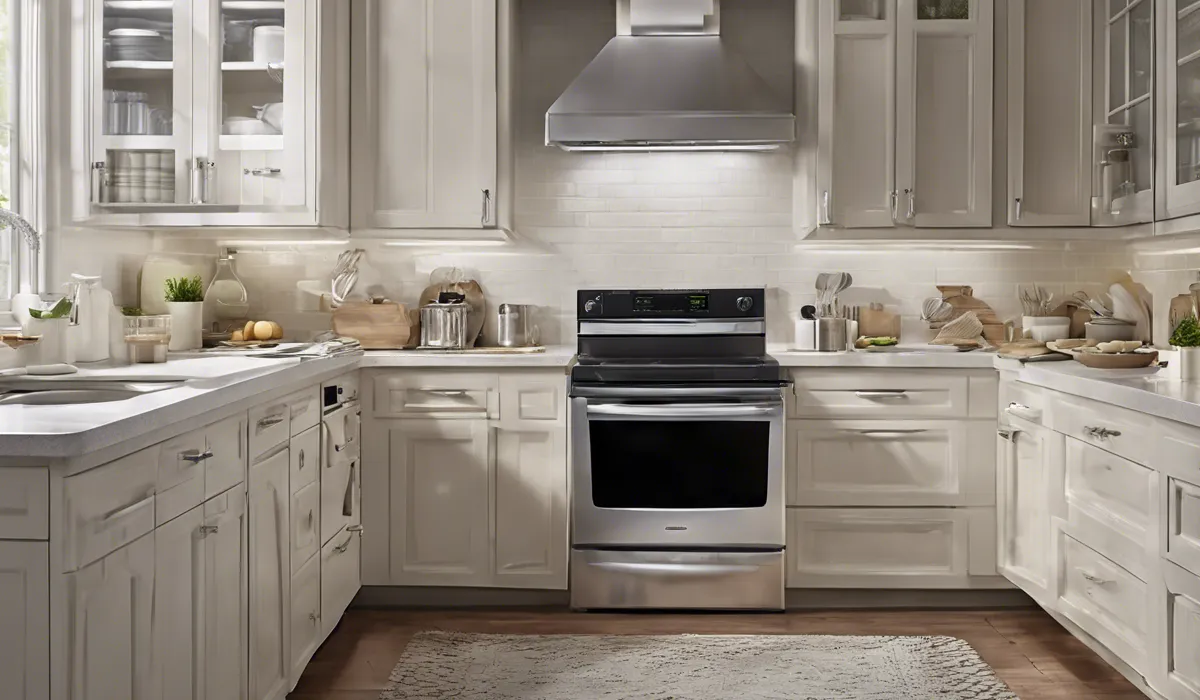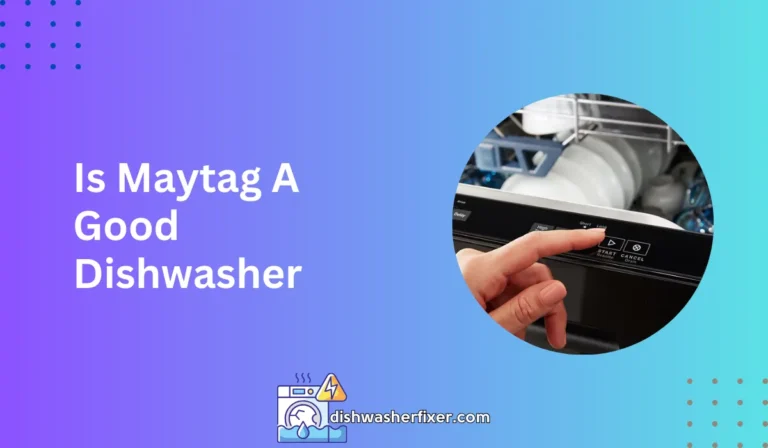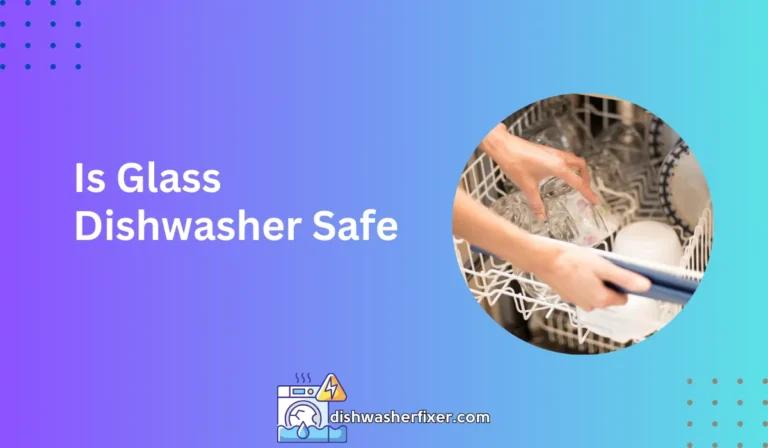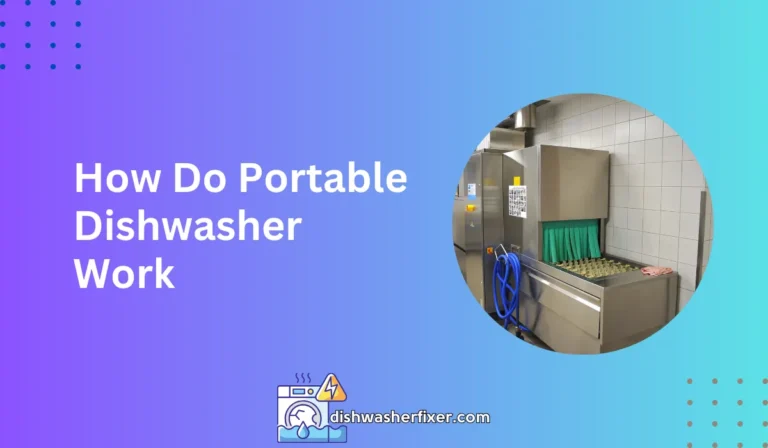Why Won’t My Dishwasher Turn On? 5 Common Fixes!
A dishwasher may not turn on due to a tripped circuit breaker, faulty door latch, or a disrupted power supply. Ensure the power cord is plugged in and the outlet is functional. Check for a blown fuse or tripped breaker, and test the door latch for secure closure.
Common Reasons a Dishwasher Won’t Turn On

Power Supply Issues
One of the most fundamental reasons a dishwasher fails to start is an interruption in the power supply. This can stem from several issues, ranging from simple to complex.
Tripped Circuit Breaker or Blown Fuse
Electrical surges or overloaded circuits can cause a circuit breaker to trip or a fuse to blow. This protective measure helps prevent electrical fires, but it also stops power from reaching your dishwasher.
Faulty Outlet or Plug
A malfunctioning outlet or a damaged plug can disrupt the connection between your dishwasher and the power source. It’s essential to ensure the plug fits snugly into the outlet and that the outlet itself is not faulty.
Power Cord Damage
Over time, the power cord may suffer from wear and tear or accidental damage. Physical damage to the cord can break the electrical pathways, preventing the dishwasher from turning on.
Door Latch Malfunctions
The dishwasher door must be securely latched for the appliance to operate. A malfunctioning door latch is a safety feature that prevents the dishwasher from starting if the door is not properly closed.
Misalignment or Obstruction
An improperly aligned door or an obstruction blocking the latch can prevent the dishwasher from starting. This could be due to a simple obstruction or misaligned hinges.
Worn Out or Broken Latch
A latch that is worn out or broken cannot engage properly. This issue will need to be addressed to restore the dishwasher’s functionality.
Control Panel and Electronic Issues
Dishwashers today are equipped with sophisticated electronics that control their operations. When these electronic components fail, the dishwasher may not turn on.
Faulty Control Board
The control board is the brain of the dishwasher. A faulty control board can disrupt the signals necessary to start the machine.
Problems with Touchpad or Buttons
Wear and tear or moisture can cause issues with the touchpad or buttons, making it difficult to select the appropriate settings or start the dishwasher.
Need for a Reset
Sometimes, all that is needed is a simple reset to clear any errors or glitches in the system. This can often be done by unplugging the dishwasher for a few minutes or using a specific button combination.
Troubleshooting Steps to Diagnose the Problem

Checking the Power Source
Diagnosing power supply issues can help determine why your dishwasher won’t turn on. Here are some steps to check the power source:
Inspect the Plug and Outlet
Start by ensuring that the dishwasher is properly plugged in and that the outlet is not the issue. It might be helpful to plug another device into the same outlet to test its functionality.
Reset Circuit Breakers or Replace Fuses
If the outlet is not the problem, check your home’s electrical panel for any tripped breakers or blown fuses. Reset or replace as necessary.
Test the Power Cord Continuity
If you suspect that the power cord is damaged, use a multimeter to test for continuity. If there is no continuity, the cord may need to be replaced.
Inspecting and Adjusting the Door Latch
Problems with the door latch can often be fixed by inspection and adjustment:
Clean and Realign the Latch Assembly
Cleaning any debris from around the latch and checking for proper alignment can often resolve issues with the door not closing properly.
Check for Mechanical Faults
If cleaning and realignment do not fix the issue, inspect the latch for any broken components that may need replacing.
Resetting and Testing the Control Panel
When facing electronic issues, a few steps can help reset and test the control panel:
Performing a Dishwasher Reset
Many dishwashers have a reset function. Consult your user manual or the manufacturer’s website to learn the specific reset procedure for your model.
Looking for Error Codes or Lights
If the dishwasher has a display, check for any error codes or flashing lights that might indicate the nature of the problem.
Consult the User Manual for Specific Troubleshooting
The user manual often includes a troubleshooting section that can provide guidance on the issues you are experiencing with your dishwasher.
Professional Repair or Self-Fix: When to Call an Expert

Assessing the Extent of the Issue
Determining the severity of the issue can help you decide whether to attempt a repair yourself or call a professional:
When DIY Fixes Don’t Work
If you have tried the troubleshooting steps and the dishwasher still won’t turn on, it may be time to call an expert for help.
Identifying When the Problem is Beyond Basic Troubleshooting
If the issue seems to be with the dishwasher’s internal electronics or you are not comfortable working with electrical components, professional assistance is recommended.
Safety Concerns with DIY Repairs
There are risks involved with attempting repairs on your own, particularly when it comes to electrical appliances:
Risks of Electrical Shock
There is a risk of electrical shock when working with the power supply of a dishwasher. Always ensure the power is disconnected before attempting any repairs.
Possible Voiding of Warranty
DIY repairs can sometimes void the warranty on your dishwasher. It’s important to consider whether calling a professional might be the safer choice to maintain your warranty.
The Benefits of Professional Assessment
There are several benefits to having a professional assess and repair your dishwasher:
Expert Diagnostics
Professionals have the expertise to quickly diagnose the issue and identify the best course of action.
Access to Specialized Tools and Parts
Repair technicians have the necessary tools and access to replacement parts that may not be readily available to the average consumer.
Guarantee on Repair Work
Professional repairs often come with a guarantee on the work performed, providing peace of mind that the issue has been resolved.
FAQs About Dishwasher Troubleshooting
Why won’t my dishwasher start even though it’s plugged in?
It could be due to a tripped circuit breaker, faulty door latch, or a disrupted power supply. Check the door latch for secure closure and ensure the power outlet is functional.
How do I know if my dishwasher’s circuit breaker has tripped?
Locate your home’s electrical panel and look for a switch that is not in the ‘On’ position. It may be in the ‘Off’ position or in a neutral position between ‘On’ and ‘Off.’ Flip it back to ‘On’ to reset the breaker.
What should I do if the power outlet for my dishwasher isn’t working?
Test the outlet with another device to ensure it’s functional. If the other device also doesn’t work, you may have a blown fuse or need to reset the breaker related to that outlet.
Could a faulty door latch be the reason my dishwasher won’t turn on?
Yes, if the door latch is not engaging properly, the dishwasher may not start as a safety precaution. Ensure the door is closed securely and that the latch mechanism is not damaged.
What are the steps to take if my dishwasher is not receiving power?
First, ensure the power cord is securely plugged into the outlet. Then check your home’s fuse box or circuit breaker to see if a fuse has blown or a breaker has tripped. If necessary, replace the fuse or reset the breaker.
Final Thoughts
When a dishwasher won’t start, check for simple issues like a tripped circuit breaker, a faulty door latch, or a power supply interruption.
Confirm the power cord is securely connected and the outlet is working. Inspect for any blown fuses or a tripped breaker, and make sure the door latch closes properly to ensure the dishwasher can operate.





